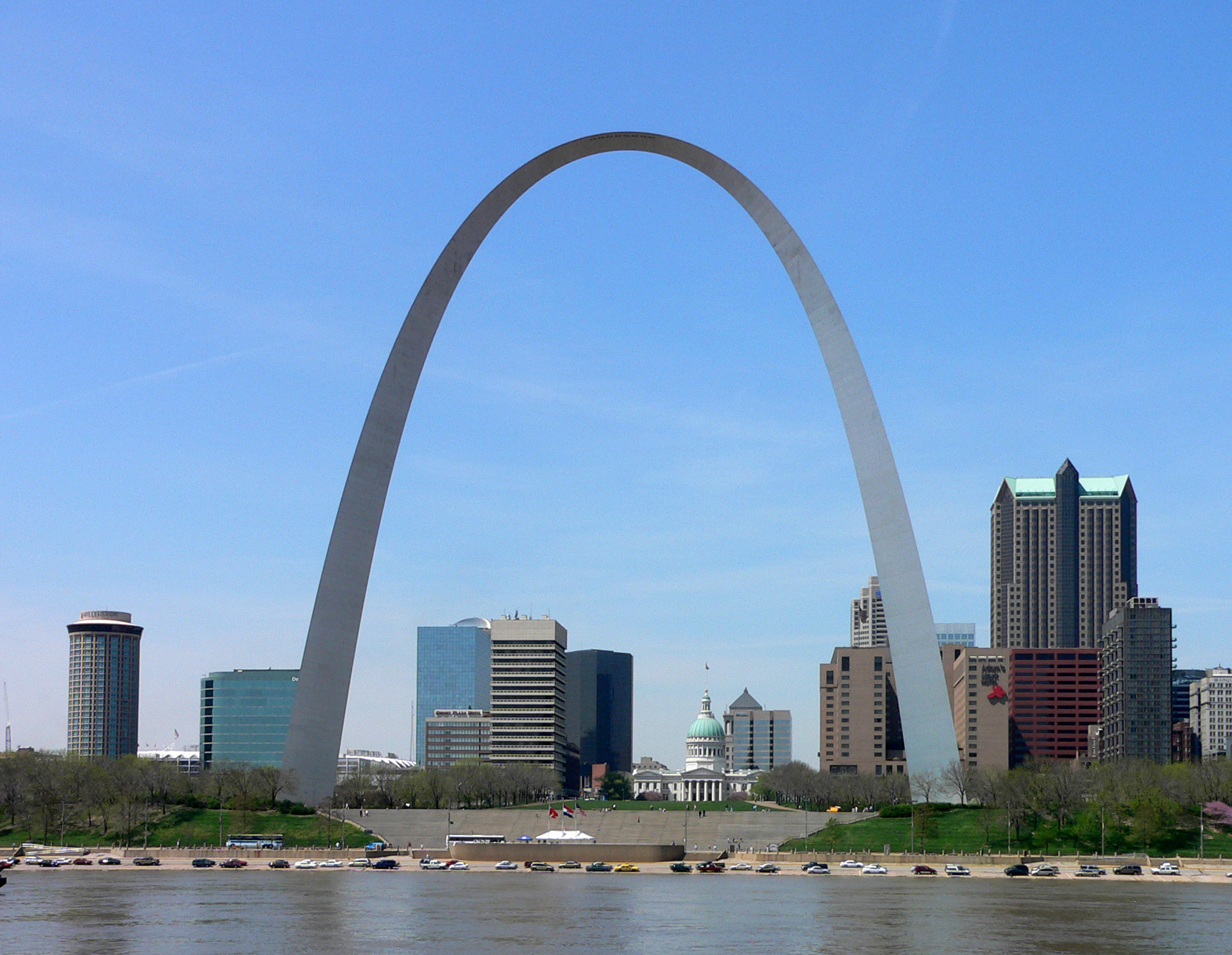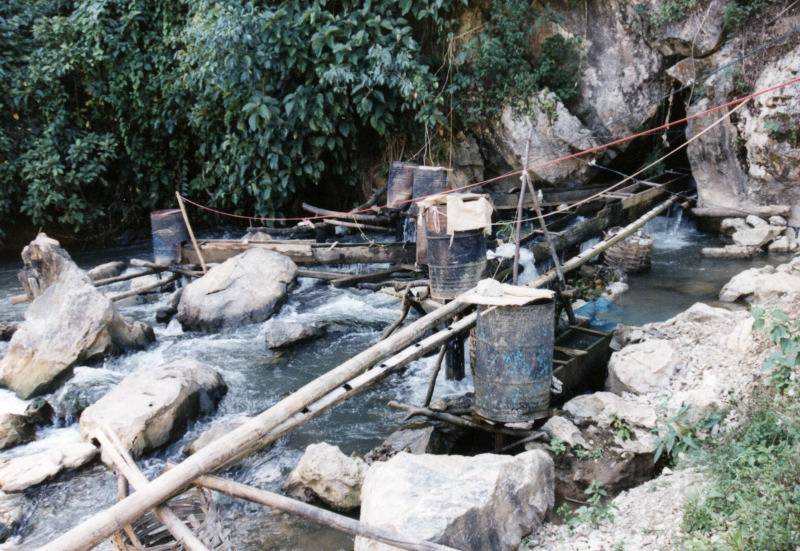|
Éguzon Dam
The Éguzon dam is a hydroelectric dam on the river Creuse in central France France, officially the French Republic, is a country located primarily in Western Europe. Overseas France, Its overseas regions and territories include French Guiana in South America, Saint Pierre and Miquelon in the Atlantic Ocean#North Atlan .... Construction took place from 1922 to 1926 and, at the time, was the largest dam in Europe. Éguzon Dam The dam is 61 metres high and 300 metres across, with the thickness varying from 54 metres at the base to 5 metres at the top. The water behind the dam creates the Chambon Lake which, at 312 hectares, is the largest body of water in the region, and is popular with watersports enthusiasts. Electricity generation is via six valves, with a power of 12 MW each, giving an annual electricity production of 101 million kWh. See also * Renewable energy in France References * External links * Dams in France Arch dams Hyd ... [...More Info...] [...Related Items...] OR: [Wikipedia] [Google] [Baidu] |
Hydroelectric
Hydroelectricity, or hydroelectric power, is Electricity generation, electricity generated from hydropower (water power). Hydropower supplies 15% of the world's electricity, almost 4,210 TWh in 2023, which is more than all other Renewable energy, renewable sources combined and also more than nuclear power. Hydropower can provide large amounts of Low-carbon power, low-carbon electricity on demand, making it a key element for creating secure and clean electricity supply systems. A hydroelectric power station that has a dam and reservoir is a flexible source, since the amount of electricity produced can be increased or decreased in seconds or minutes in response to varying electricity demand. Once a hydroelectric complex is constructed, it produces no direct waste, and almost always emits considerably less greenhouse gas than fossil fuel-powered energy plants. [...More Info...] [...Related Items...] OR: [Wikipedia] [Google] [Baidu] |
Creuse (river)
The Creuse (; ) is a long river in western France, a tributary of the Vienne. Its source is in the Plateau de Millevaches, a north-western extension of the Massif Central. Course The Creuse flows northwest through the following departments and towns: * Creuse department (named after the river): Aubusson. * Indre department: Argenton-sur-Creuse, Le Blanc. * Indre-et-Loire department : Yzeures-sur-Creuse, Descartes * Vienne department: La Roche-Posay The Creuse flows into the Vienne about north of Châtellerault. It receives its longest tributary, the Gartempe, in La Roche-Posay. The Creuse valley is the setting for paintings by the so-called Crozant School, including works by Armand Guillaumin and a series of vivid landscapes by the Bordeaux artist Alfred Smith. Dams and lakes There are six hydroelectric dams on the river. Three are in the Creuse département with one at Chambon-Sainte-Croix above Anzême, one at Les Chezelles near Le Bourg-d'Hem and one a ... [...More Info...] [...Related Items...] OR: [Wikipedia] [Google] [Baidu] |
France
France, officially the French Republic, is a country located primarily in Western Europe. Overseas France, Its overseas regions and territories include French Guiana in South America, Saint Pierre and Miquelon in the Atlantic Ocean#North Atlantic, North Atlantic, the French West Indies, and List of islands of France, many islands in Oceania and the Indian Ocean, giving it Exclusive economic zone of France, one of the largest discontiguous exclusive economic zones in the world. Metropolitan France shares borders with Belgium and Luxembourg to the north; Germany to the northeast; Switzerland to the east; Italy and Monaco to the southeast; Andorra and Spain to the south; and a maritime border with the United Kingdom to the northwest. Its metropolitan area extends from the Rhine to the Atlantic Ocean and from the Mediterranean Sea to the English Channel and the North Sea. Its Regions of France, eighteen integral regions—five of which are overseas—span a combined area of and hav ... [...More Info...] [...Related Items...] OR: [Wikipedia] [Google] [Baidu] |
Barrage D'Éguzon (36) - Crête - Rive Droite - 2
Barrage may refer to: Entertainment * ''Barrage'' (Barrage album), by band Barrage * ''Barrage'' (Paul Bley album), 1965 * Barrage (group), a Canadian violin ensemble * ''Barrage'' (film), a 2017 film * ''Barrage'' (manga), a 2012 shĹŤnen manga by KĹŤhei Horikoshi * Barrage (DC Comics), a character from DC Comics * Barrage (Marvel Comics), a character from Marvel Comics Other uses * Barrage (military science), a wide range of structures, devices, or measures for destroying something to constrain or impede the movement of troops and forces. * Barrage (artillery), a line or barrier of artillery or depth charge fire * Barrage (dam), a type of dam * Barrage balloon, a tethered balloon used as an obstacle to attacking aircraft * Tidal barrage A tidal barrage is a dam-like structure used to capture the energy from masses of water moving in and out of a bay or river due to tidal forces. Instead of damming water on one side like a conventional dam, a tidal barrage allows water t ... [...More Info...] [...Related Items...] OR: [Wikipedia] [Google] [Baidu] |
Lac De Chambon department.
The Lac de Chambon (''Chambon Lake'') is an artificial lake on the river Creuse, France, created by the Éguzon Dam, a hydroelectric dam. Beaches have been created around the lake, the largest in the Centre Region. There is a sailing school on the lake near Eguzon. Canoes, kayaks and pedalos can be hired in season. The lake is also very popular with waterskiers and anglers. It is not to be confused with Lac Chambon in the Puy-de-Dôme department or Lac du Chambon in the Isère Isère ( , ; ; , ) is a landlocked Departments of France, department in the southeastern French Regions of France, region of Auvergne-Rhône-Alpes. Named after the river Isère (river), Isère, it had a population of 1,271,166 in 2019. External links * Chambon Chambon ...[...More Info...] [...Related Items...] OR: [Wikipedia] [Google] [Baidu] |
Renewable Energy In France
Under its commitment to the EU renewable energy directive of 2009, France has a target of producing 23% of its total energy needs from renewable energy by 2020. This figure breaks down to renewable energy providing 33% of energy used in the heating and cooling sector, 27% of the electricity sector and 10.5% in the transport sector. By the end of 2014, 14.3% of France's total energy requirements came from renewable energy, a rise from 9.6% in 2005. The outlook for renewable electricity in France received a boost following the publication in October 2016 of the "Programmation pluriannuelle de l'Ă©nergie", showing a commitment to re-balancing the electricity mix towards renewables. According to the report, renewable electricity capacity is planned to grow from 41 GW in 2014 to between 71 and 78 GW by 2023. Historically the electricity sector in France has been dominated by the country's longstanding commitment to nuclear power. However, the report emphasizes that by 2025 ... [...More Info...] [...Related Items...] OR: [Wikipedia] [Google] [Baidu] |
Dams In France
A dam is a barrier that stops or restricts the flow of surface water or underground streams. Reservoirs created by dams not only suppress floods but also provide water for activities such as irrigation, human consumption, industrial use, aquaculture, and navigability. Hydropower is often used in conjunction with dams to generate electricity. A dam can also be used to collect or store water which can be evenly distributed between locations. Dams generally serve the primary purpose of retaining water, while other structures such as floodgates or levees (also known as dikes) are used to manage or prevent water flow into specific land regions. The word ''dam'' can be traced back to Middle English, and before that, from Middle Dutch, as seen in the names of many old cities, such as Amsterdam and Rotterdam. Ancient dams were built in Mesopotamia and the Middle East for water control. The earliest known dam is the Jawa Dam in Jordan, dating to 3,000 BC. Egyptians also built dams, ... [...More Info...] [...Related Items...] OR: [Wikipedia] [Google] [Baidu] |
Arch Dams
An arch is a curved vertical structure spanning an open space underneath it. Arches may support the load above them, or they may perform a purely decorative role. As a decorative element, the arch dates back to the 4th millennium BC, but structural load-bearing arches became popular only after their adoption by the Ancient Romans in the 4th century BC. Arch-like structures can be horizontal, like an arch dam that withstands the horizontal hydrostatic pressure load. Arches are usually used as supports for many types of vaults, with the barrel vault in particular being a continuous arch. Extensive use of arches and vaults characterizes an arcuated construction, as opposed to the trabeated system, where, like in the architectures of ancient Greece, China, and Japan (as well as the modern steel-framed technique), posts and beams dominate. Arches had several advantages over the lintel, especially in the masonry construction: with the same amount of material it can have larger ... [...More Info...] [...Related Items...] OR: [Wikipedia] [Google] [Baidu] |
Hydroelectric Power Stations In France
Hydroelectricity, or hydroelectric power, is electricity generated from hydropower (water power). Hydropower supplies 15% of the world's electricity, almost 4,210 TWh in 2023, which is more than all other renewable sources combined and also more than nuclear power. Hydropower can provide large amounts of low-carbon electricity on demand, making it a key element for creating secure and clean electricity supply systems. A hydroelectric power station that has a dam and reservoir is a flexible source, since the amount of electricity produced can be increased or decreased in seconds or minutes in response to varying electricity demand. Once a hydroelectric complex is constructed, it produces no direct waste, and almost always emits considerably less greenhouse gas than fossil fuel-powered energy plants. [...More Info...] [...Related Items...] OR: [Wikipedia] [Google] [Baidu] |




